If anyone truly knows anything about your modest and enigmatic Blogger, it is of my great enthusiasm for oil paintings from the seventeenth-century United Provinces of the Netherlands (AKA the Dutch Republic) and its culturally-poorer counterpart, the iron-lantern-jaw-ruled Spanish Netherlands.
The famous Weberian Protestant aversion to sloth that produced the capitalistic madness of Tulipmania! also gave us those famous tobacco-loving Old Dutch Masters. Although today the feathery-haired Rembrandt of the Rhine or lazy pearl-loving lech Jan Vermeer are the perhaps the most well-known seventeenth-century Netherlandish artists, a whole host of lesser stars shone in the Dutch artistic firmament.
And the Dutch liked to commission some weird pictures. Maybe this had something to do with the high number of painters-per-capita in cities like Amsterdam and Delft. Or perhaps it was related somehow to all those dams and dykes. Most likely, though, it was because those damned Calvinists burghers had more slave trade profits, Javanese plantation guilders, and tulip credits than they knew what to do with -- so why not commission some unique art for your townhouse on the canal?
At any rate, here I present a sampling of said eccentric (to our modern eye) oil paintings, with a brief running commentary by this poor man's Simon Schama:
Anatomy Lesson by Dr. Frederick Ruysch, Jan van Neck (1634-1714), 1683.
Sure, the precipitous growth in medical and anatomical knowledge during the seventeenth century had to have been achieved through some pretty gruesome research, but...what the f**k?!? I don't even know where to start with this one. An anatomy lesson, with a baby? A kid holding a baby skeleton? If this doesn't prove the strange, foreign-countryness of the seventeenth century, then nothing will. Also, I'm glad they're pointing at baby, because I WOULDN'T NOTICE IT otherwise!
Banquet of the Officers and Subalterns of the Haarlem Calivermen Civic Guard,
Cornelis van Haarlem (1562-1638), 1600.
The Dutch Republic was noted by its contemporaries for its problems with urban overcrowding. That's why half of these guys packed up and globetrotted to New Ha(a)rlem a few years later. I'm glad that's just a chicken on the table, though.
But wait! This other van Haarlem is even straanger!
The Fall of Lucifer, 1588.
This painting erroneously titled The Fall of the Titans until the 1920s. Whether they Judeo-Christian or Greek mythological figures be, one can't help but notice those unfortunate butterflies covering the unmentionables of those fallen angels/future incubuses.
Rich and Poor, or War and Peace, Unknown Artist.
This biting social commentary is obviously from the Spanish Netherlands :( Jeez, it looks like it was painted in 1409 -- nice use of perspective, international gothicist! And if that's supposed to be different avatars of the same guy, you fooled me, unknown artist!
But wait! I (naturally) have several more bread-related paintings for your enjoyment:
A Baker Blowing his Horn, Gabriel Metsu (1629-67), 1660.
This baker looks pretty satisfied with his diverse output of breads, although his servant girl/wife in the back seems to be less impressed. Get a load of that "horn of plenty," and notice those pretzels up on that early modern pretzel rack.
And take a look at this inferior baker-portrait copycat:
The Baker, Job Berckheyde (1630-93), 1681.
This baker's horn-blowing seems a little more labored, perhaps because his servant girl is out on the canal lollygagging for the young men. And maybe he's upset because he has no cool ornamental bread loaf propped up on his counter or awesome blue-leafed botanical curiosity hanging above his head.
Still Life with Dog and Cat in Front of a Lobster, Jan van Kessel the Younger (1654-1708), c. 1690.
The Dutch turned the still life painting into high art, although I don't know if a scene with so many living, almost living, or boiled animals qualifies as a still life OR fine art. This is, in fact, one of a series of three (that I can find) still life paintings of weird seafood by van Kessel. I guess the demand was high for lobster-on-Delftware scenes. Some other (real!) van Kessel favorites include Two Cats Playing with Fish (below), Monkey among Fruit, and Dwarfs with a Dog (also below).
Self-Portrait with Vanitas Symbols, David Bailly (1584-1657), 1651.
Those predestination-obsessed Calvinists sure liked their vanitas (reflections on the transitory nature of life and constant presence of death) paintings. But most vanitas scenes did not have (non-skull) people in them, let alone people holding paintings of old guys (or dowel rods, or long clay pipes, for that matter)!
Here's another strangely personal vanitas portrait:
Vanitas Portrait of the Painter, Antoine Steenwinkel, Date Unknown.
Steenwinkel had so little vanity that I can find little or nothing about him or this painting in my vast reference library (organized using the Cotton system). I'm not sure if the guy holding the painting-in-a-painting is supposed to be the artist (or, indeed, the same person whose skull sits on the table). "Like sand through the hourglass, so are the (short) days of our early modern lives."
And here's another painting-in-a-painting:
Margareta Maria de Roodere and Her Parents, Gerard van Honthorst (1592-1656), 1652.
What to do when you want a family portrait, but one of your parents has gone to (fingers crossed) join the Elect in the sky? Have your artistically-inclined daughter paint a portrait of her father from memory and then commission another, superior male artist to paint the whole gang! Also, those Dutch really enjoyed pointing at obvious things.
The following is another great van Honthorst specimen:
The Concert, 1624.
Whoa, check out those buxom lutists! I'm not sure what the baby-angels with laurels in town are contributing to the concert, however.
The Bull, Paulus Potter (1625-54), 1647.
I've heard tell that the bull at the center of this interesting pastoral scene was anatomically impossible, exhibiting characteristics of several breeds and different ages of cow-maturity. But I'll trust the Gorton's fisherman on the left, who doesn't seem to mind his anachronistic menagerie too much.
A View of Delft, with a Musical Instrument Seller’s Stall, Carel Fabritius (1622-54), 1652.
This Rembrandt protege meant for his curious painting to be viewed mounted on a curved surface to fully enjoy this experiment with perspective. Despite what our earlier piece The Concert might lead you to believe, it doesn't seem as if this lutemonger is doing too much business in Bizarro-Delft.
The Council Chamber in Amsterdam Town Hall, Pieter De Hooch (1629-84), 1665.
(Or, Scene with Giant Ominous Curtain)
Finally, we have this group portrait, where we see, among other things, yet another (partially obscured) painting-in-a-painting. Although this is a council chamber, not much business seems to be getting done, perhaps because everyone is staring at the huge curtain floating above their heads.
* * *
Well, art-lovers, its time this Sister Wendy retired to her cloister to prepare another fact-filled gallery tour. I hope you've enjoyed our little trip through the Dutch Golden Age. Until then, the Cabinet is closed.

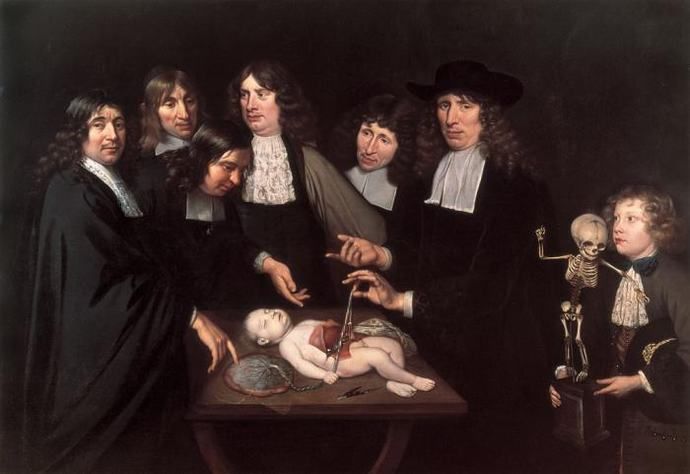
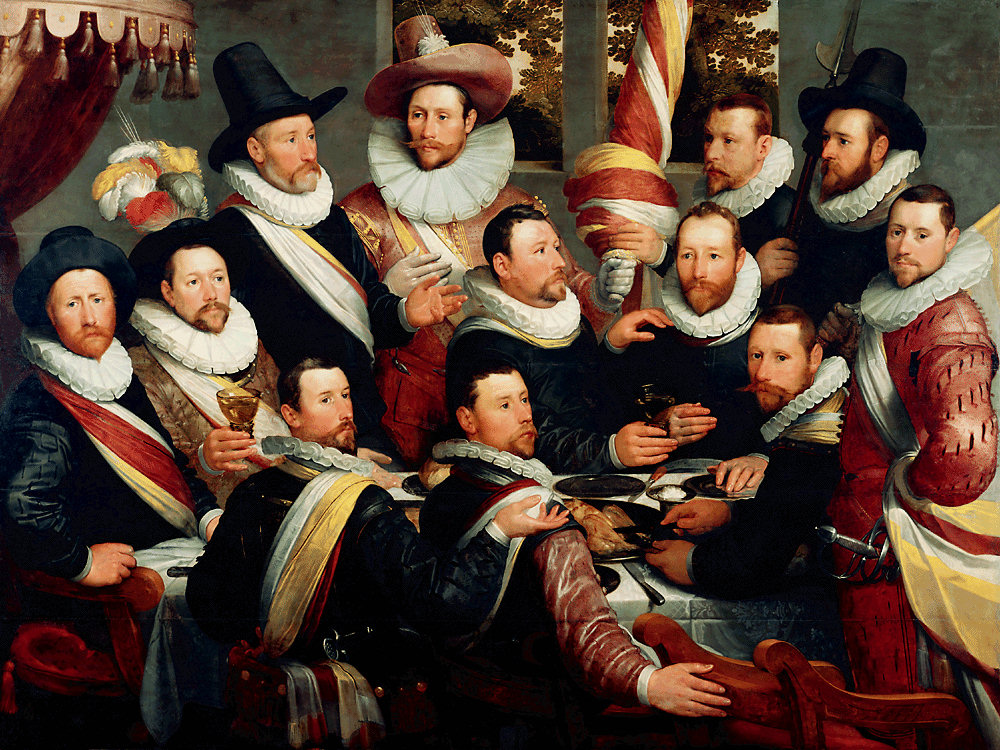

.jpg)





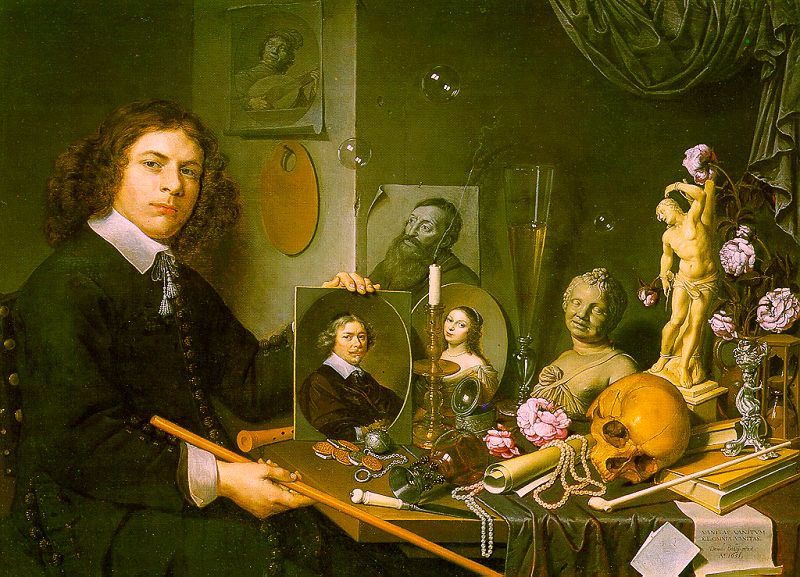
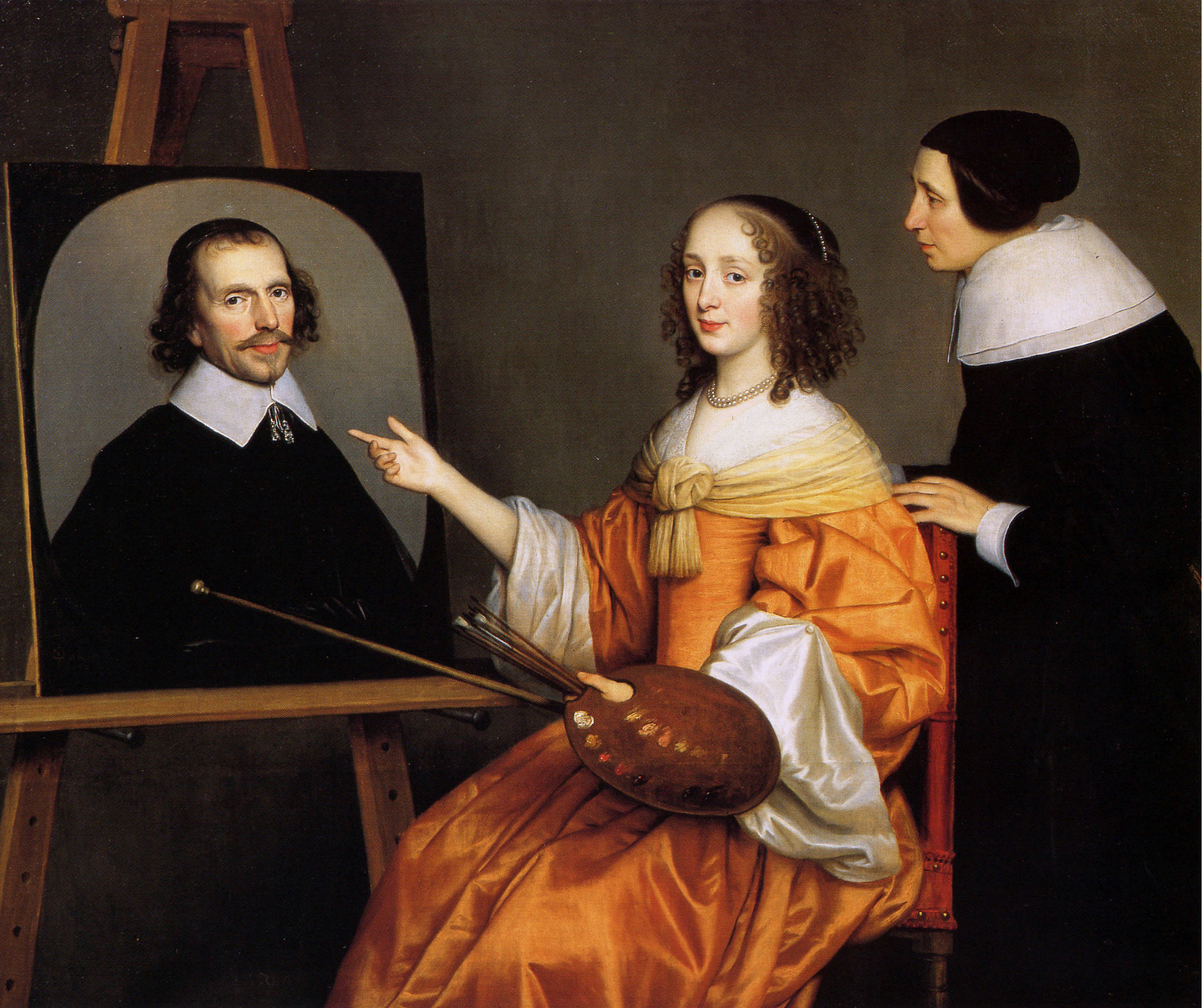

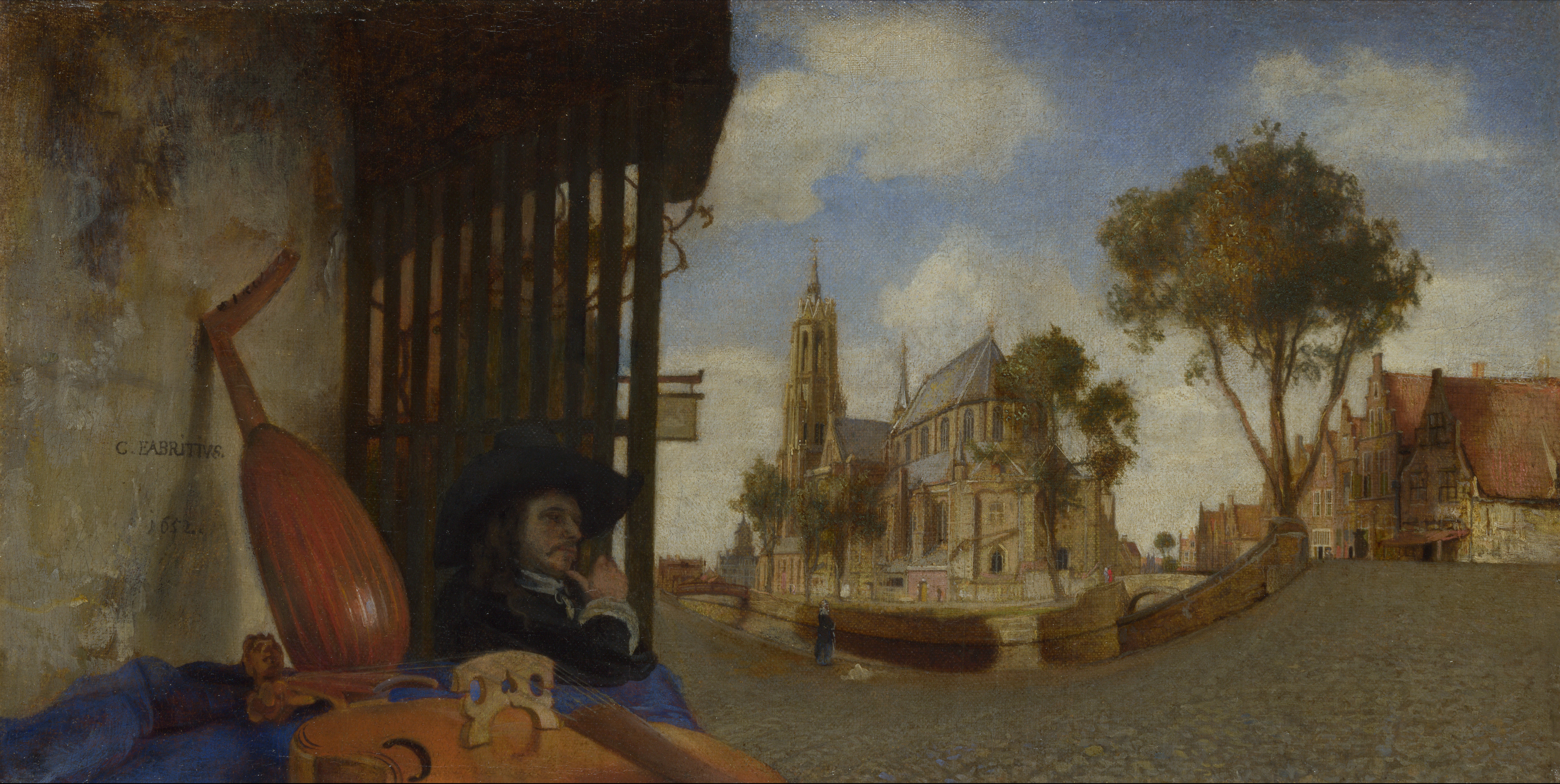
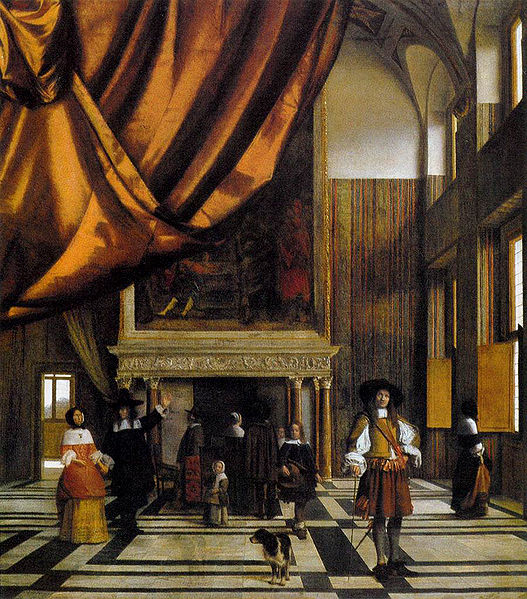
Fantastic
ReplyDeleteFabulous collection of painting. I just love them all. Thanks for sharing.
ReplyDeletepaint by numbers for adults